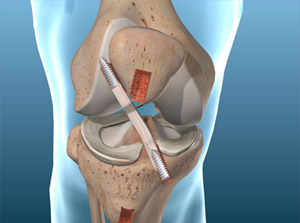
ACL Reconstruction Using the Patellar Tendon A Comprehensive Guide by Dr. Vivek Bansal
ACL (Anterior Cruciate Ligament) injuries are among the most common and serious knee injuries, particularly affecting athletes and individuals with active lifestyles. When non-surgical treatments fail to restore knee stability, ACL reconstruction becomes essential to regain full function and prevent further damage. One of the most effective and widely used techniques for ACL reconstruction is the use of the patellar tendon graft. In this article, Dr. Vivek Bansal, a leading orthopedic surgeon, delves into the intricacies of ACL reconstruction using the patellar tendon, highlighting its benefits, procedure, and recovery process.
Understanding ACL Injuries
The ACL is a key ligament that stabilizes the knee joint, preventing excessive forward movement of the tibia relative to the femur. Injuries to the ACL often occur due to sudden stops, changes in direction, or awkward landings, making them prevalent in sports like soccer, basketball, and skiing. Symptoms include pain, swelling, and instability in the knee, often making daily activities challenging.
Why Choose Patellar Tendon Graft for ACL Reconstruction?
Dr. Vivek Bansal explains that the patellar tendon graft, also known as the bone-patellar tendon-bone (BPTB) graft, is a preferred choice for ACL reconstruction due to its strength and high success rate. The graft is harvested from the patient’s own patellar tendon, which connects the kneecap to the shinbone. This graft includes bone plugs from the patella and tibia, providing a strong and secure reconstruction.
Key advantages of using the patellar tendon graft include:
- Strength and Durability: The patellar tendon graft is strong enough to withstand the stresses of daily activities and sports, making it ideal for active individuals.
- Bone Integration: The bone plugs from the graft allow for excellent integration with the patient’s natural bone, promoting quicker and more reliable healing.
- Long-Term Stability: Patients who undergo ACL reconstruction with a patellar tendon graft typically experience long-term stability and reduced risk of re-injury.
The Surgical Procedure
The ACL reconstruction surgery using the patellar tendon graft is performed arthroscopically, a minimally invasive technique that involves small incisions and the use of a camera to guide the procedure. Dr. Bansal outlines the steps involved:
- Harvesting the Graft: A portion of the patellar tendon, along with bone plugs from the patella and tibia, is carefully harvested.
- Preparation of the Knee: The damaged ACL is removed, and tunnels are drilled into the femur and tibia to accommodate the graft.
- Graft Placement: The patellar tendon graft is positioned in the tunnels and secured with screws or other fixation devices.
- Final Adjustments: The surgeon ensures the graft is properly tensioned and that knee stability is restored.
The entire procedure typically lasts around 1-2 hours, and most patients can return home the same day.
Recovery and Rehabilitation
Post-operative recovery is a critical phase in the success of ACL reconstruction. Dr. Bansal emphasizes the importance of a structured rehabilitation program to restore strength, flexibility, and knee stability. The typical recovery timeline includes:
- First Few Weeks: Focus on reducing swelling, managing pain, and gradually restoring knee mobility. Patients may use crutches and a knee brace during this period.
- 6-12 Weeks: Progressive strengthening exercises and controlled weight-bearing activities are introduced to rebuild muscle strength.
- 3-6 Months: Advanced rehabilitation includes sport-specific drills and agility training, preparing the patient for a return to sports or active lifestyles.
Most patients can expect to return to their previous level of activity within 6-12 months, although this timeline may vary based on individual progress.